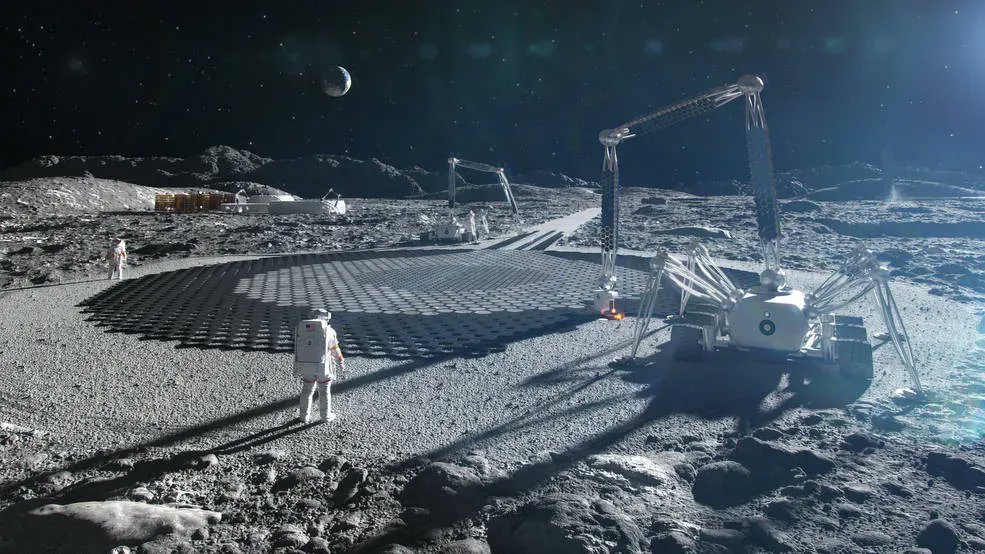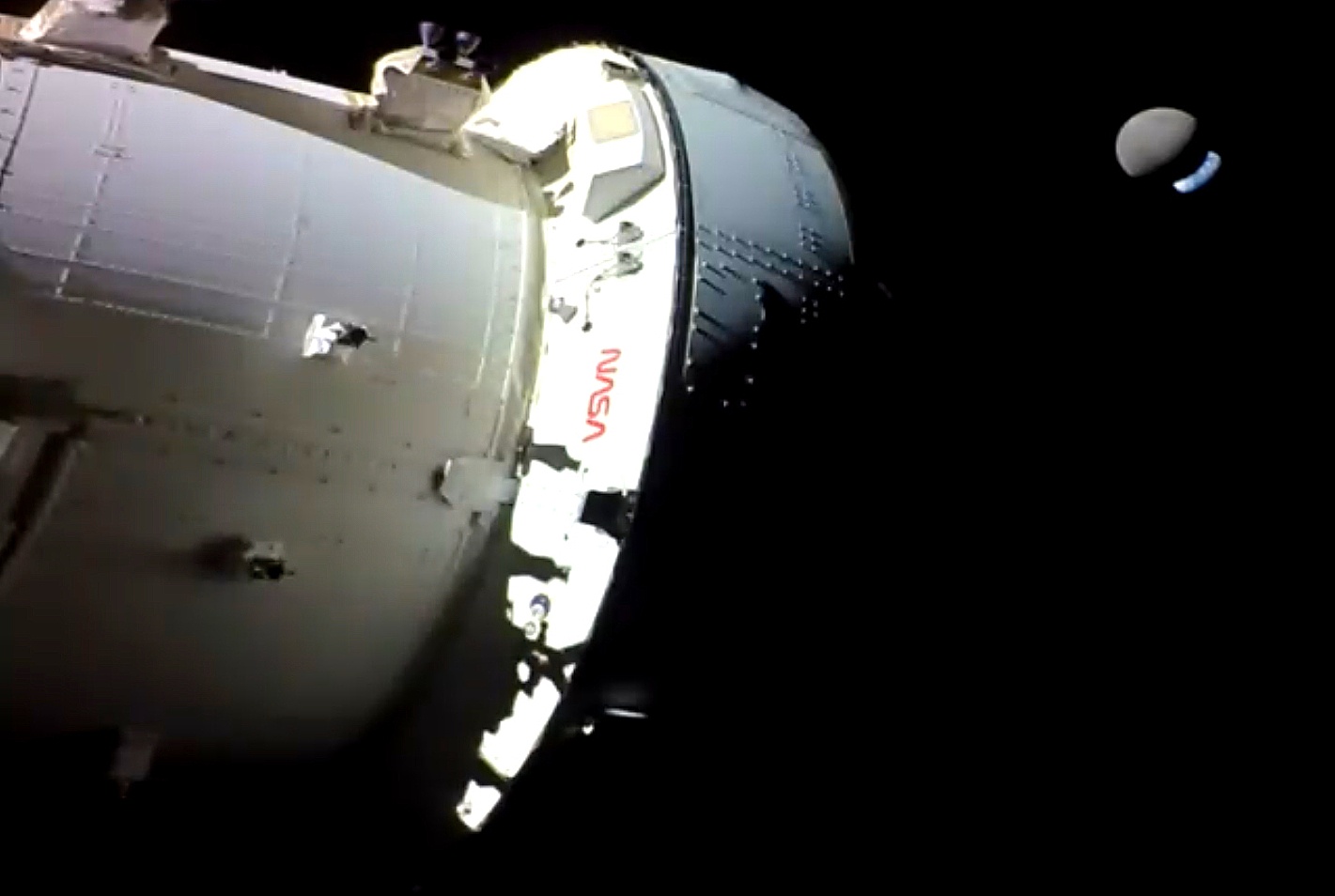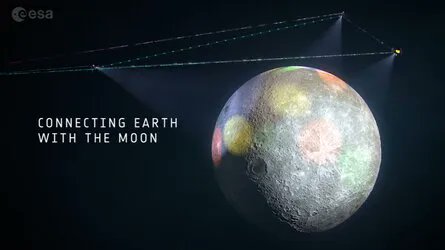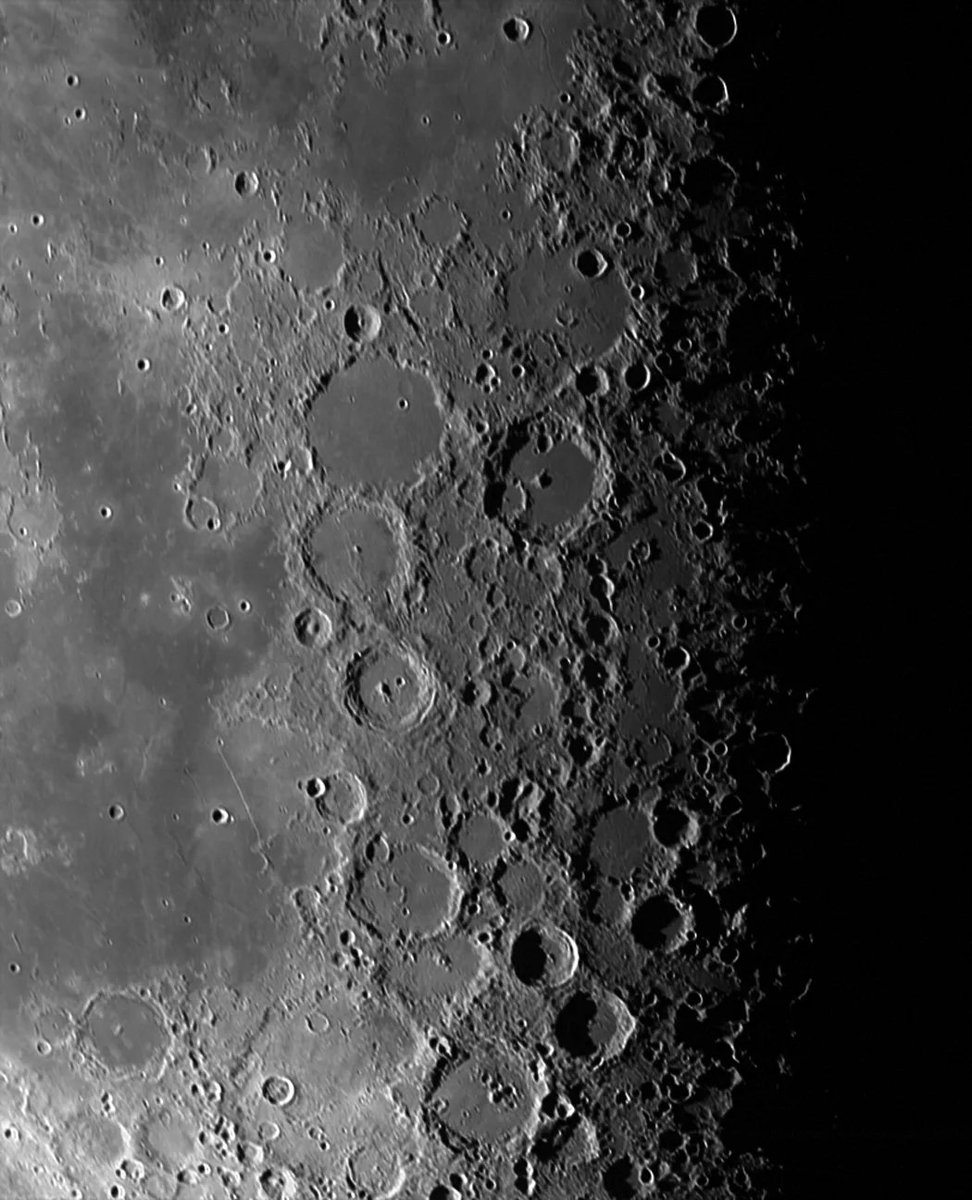NASA has started engaging with commercial partners are some out-there projects. One of the most recent is a six year, $57.2 million deal with ICON, a company based in Austin, Texas that specializes in in-situ resource utilization 3D printing technologies.
Continue reading “NASA Wants to Build Landing Pads on the Moon”Tiny Cubesat Will Shine an Infrared ‘Flashlight’ Into the Moon’s Shadowed Craters, Searching for Water Ice
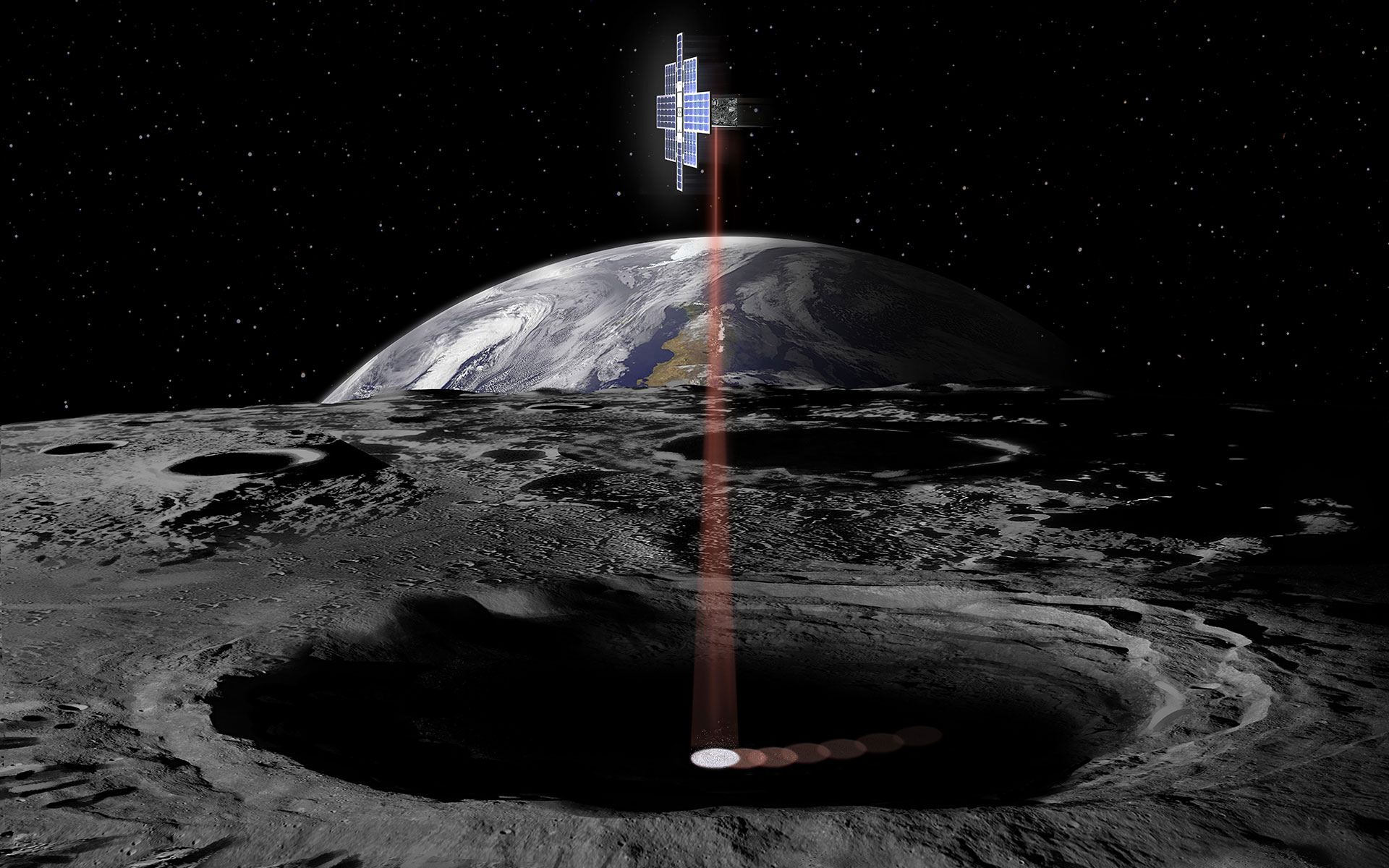
A tiny spacecraft is ready to head out for a big job: shining a light on water ice at the Moon’s south pole.
Lunar Flashlight is a cubesat about the size of a briefcase, set to launch on December 1 on a SpaceX Falcon 9 rocket, sharing a ride with the Hakuto-R Mission to the Moon.
The tiny 14 kg (30 lb) spacecraft will use near-infrared lasers and an onboard spectrometer to map the permanently shadowed regions near the Moon’s south pole, where there could be reservoirs of water ice.
“If we are going to have humans on the Moon,” said Barbara Cohen, Lunar Flashlight principal investigator, “they will need water for drinking, breathing, and rocket fuel. But it’s much cheaper to live off the land than to bring all that water with you.”
Continue reading “Tiny Cubesat Will Shine an Infrared ‘Flashlight’ Into the Moon’s Shadowed Craters, Searching for Water Ice”OK, Artemis. Now You’re Just Showing Off. A Stunning View of the Moon Eclipsing Earth From the Orion Spacecraft
Have you ever seen a lunar eclipse of the Earth from the far side of the Moon? Now we have.
On Monday (November 28, 2022) NASA’s Orion spacecraft streamed back live video showing the Earth and Moon right next to each other, followed by a stunning view of the Moon eclipsing the Earth.
What a time to be alive! Image editor Kevin Gill might have said it best:
Continue reading “OK, Artemis. Now You’re Just Showing Off. A Stunning View of the Moon Eclipsing Earth From the Orion Spacecraft”Artemis I has Completed its First Flyby of the Moon
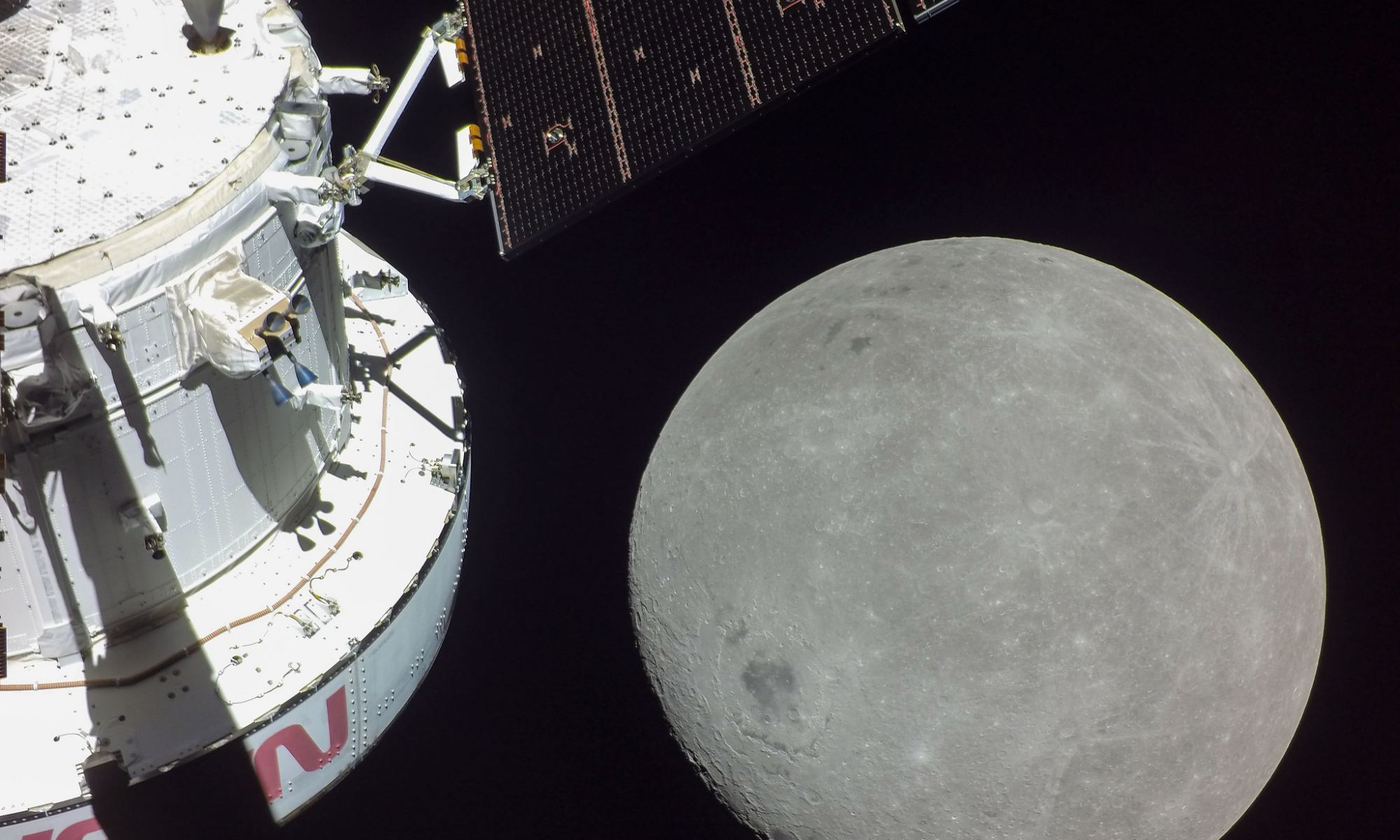
The Orion spacecraft made its first close flyby of the Moon on Monday, November 21, coming as close as 81 statute miles (130 km) from the lunar surface. As the Artemis 1 mission’s uncrewed spacecraft flew past the far side of the Moon, Orion’s orbital maneuvering system engine fired for 2 minutes and 30 seconds to successfully put the capsule into the desired orbit for the mission, called a distant retrograde orbit around the Moon.
“This burn is setting Orion up to orbit the Moon, and is largest propulsive event so far, as Artemis is hunting the Moon,” said Mike Sarafin, Artemis Mission Manager at a briefing on Monday.
Continue reading “Artemis I has Completed its First Flyby of the Moon”Europe is Building a Communications Network Around the Moon
GPS and the world’s other global positioning systems all have one very limiting disadvantage: they’re global to only one world. There is no equivalent to the precise geolocation features these systems offer for any other body in our solar system. Recently, there has been an increased focus on Lunar missions, but no way for anything on the Lunar surface to know precisely where it is. Enter the European Space Agency and their Moonlight initiative, which was showcased in a recent video on their YouTube channel.
Continue reading “Europe is Building a Communications Network Around the Moon”One Total Lunar Eclipse Photo to Rule Them All

We’ve seen some great images from the total lunar eclipse this week. But this one might top them all. Astrophotographer Andrew McCarthy created this incredible composite image, showing the Moon in various stages of the eclipse throughout the night.
“The size and shape of Earth’s shadow is clearly visible here,” McCarthy said on Twitter. “These events are absolutely magical to witness and quite surreal.”
Continue reading “One Total Lunar Eclipse Photo to Rule Them All”Stunning Photos from the November 8, 2022 Total Lunar Eclipse
Did the skies above you cooperate this morning to see the total lunar eclipse? Mine did not, and Fraser reports he was clouded out as well. But thankfully, we can live vicariously through all of the wonderful friends and astrophotographers who have shared their jaw-dropping photos of the blood Moon, Beaver Moon total lunar eclipse. This is the last total lunar eclipse until March 14, 2025.
Our lead image, a composite from University of Arizona Professor Eliot Herman shows a series of views throughout the eclipse. “This Lunar eclipse had soft gradations of color that was quite beautiful,” Herman said on Flickr. “This series of photos begins just before totality and ends just after totality. All images are 15 images stacked captured with a Questar telescope, Baader UV/IR filter, and a Nikon Z7II.”
Continue reading “Stunning Photos from the November 8, 2022 Total Lunar Eclipse”Want a Sneak Peek From NASA’s Lucy Mission? Here are Some Photos it Took of the Moon During its Flyby
We reported a few weeks ago about an Earth gravity assist flyby for the Lucy mission. Around the same as the spacecraft took a dip closer to Earth than the ISS, it took some fantastic pictures of our nearest neighbor – the Moon. After some processing, those pictures are available for inspection or gawking, as the case may be.
Continue reading “Want a Sneak Peek From NASA’s Lucy Mission? Here are Some Photos it Took of the Moon During its Flyby”Researchers Make Rocket Fuel Using Actual Regolith From the Moon
In-situ resource utilization is a hot topic these days in space exploration circles, and scientists and engineers have had a great advantage of getting access to new materials from bodies on the solar system that either have never been seen before, such as asteroids or haven’t been visited in decades, such as the moon. Recently, China’s Chang’e 5 brought back the first sample of lunar regolith to Earth in almost 50 years. Using part of that sample, researchers from several Chinese universities have developed an automated system to create rocket fuel and oxygen out of CO2, using the lunar regolith as a catalyst.
Continue reading “Researchers Make Rocket Fuel Using Actual Regolith From the Moon”The Moon had Volcanoes More Recently Than Previously Believed

Fifty years ago, NASA and the Soviet space program conducted the first sample-return missions from the Moon. This included lunar rocks brought back to Earth by the Apollo astronauts and those obtained by robotic missions that were part of the Soviet Luna Program. The analysis of these rocks revealed a great deal about the Moon’s composition, formation, and geological history. In particular, scientists concluded that the rocks were formed from volcanic eruptions more than three billion years ago.
In recent years, there has been a resurgence in lunar exploration as NASA and other space agencies have sent robotic missions to the Moon (in preparation for crewed missions). For instance, China has sent multiple orbiters, landers, and rovers to the Moon as part of the Chang’e program, including sample-return missions. A new study led by planetary scientists from the Chinese Academy of Sciences (CAS) analyzed samples obtained by the Chang’e-5 rover dated to two billion years ago. Their research could provide valuable insight into how young volcanism shaped the lunar surface.
Continue reading “The Moon had Volcanoes More Recently Than Previously Believed”
